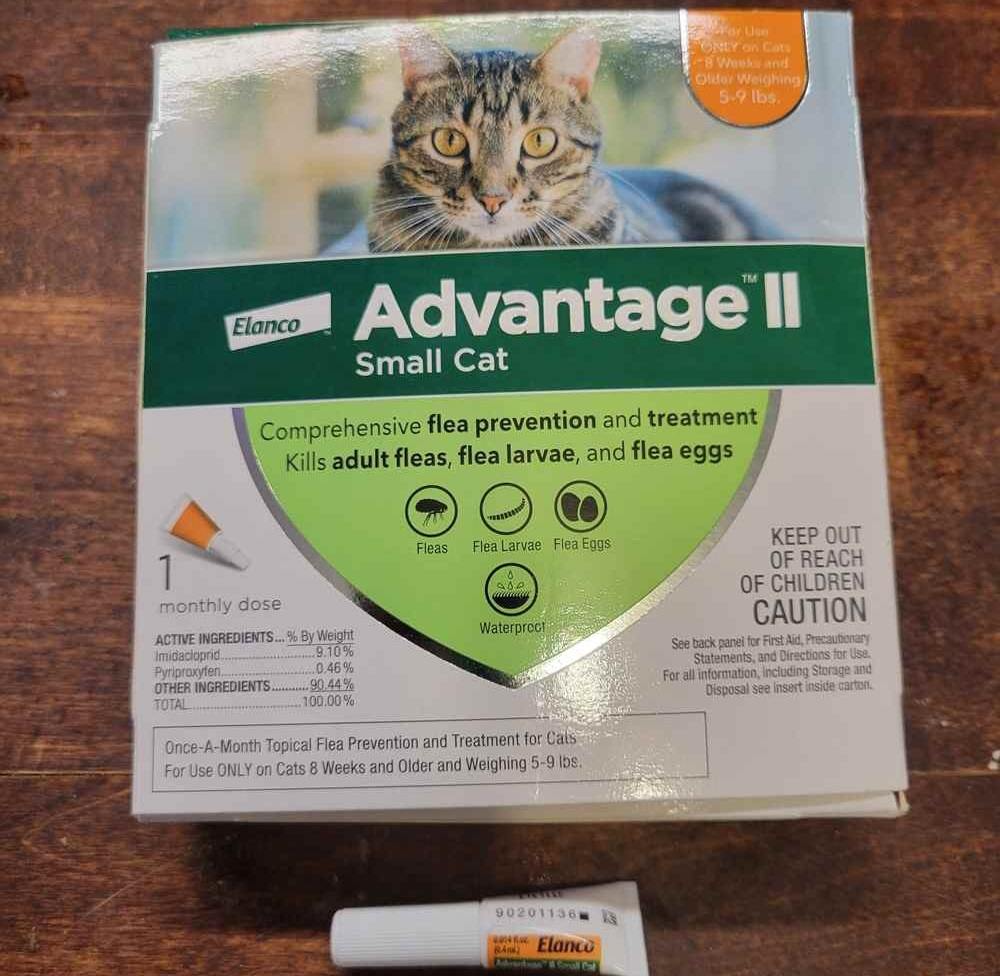
Kate Barrington / Cats.com
Advantage II is a brand name for a topical, “spot-on” flea control and prevention product manufactured by Bayer containing the ingredients imidacloprid and pyriproxyfen. It came on the market in 2011, largely replacing the original Advantage for cats.
Advantage II For Cats Overview

This article is primarily focused on the Advantage II product. You’ll learn about Advantage II for cats, its ingredients, the ranges of pests it targets, possible side effects to consider, and some frequently asked questions.
You can also find an article on the combination product Advantage Multi for Cats , as well as an article encompassing a broader overview of Advantage products for cats.
About Advantage II for Cats
Advantage II’s main ingredients are imidacloprid and pyriproxyfen which work in combination to kill adult fleas, flea eggs, and flea larvae, eliminating flea infestation and preventing further infestations.
Advantage “spot-on” products are applied to the surface of a small target area or “spot” of the skin, usually in front of the shoulders at the back of the neck.
Advantage II collects in the oils of the skin and hair, allowing for continual release, lending to its 30 day period of efficacy. Per the product label, it can start killing fleas within 2 hours and can kill all adult fleas within 12 hours.
It is important to note that while these pesky pests are affected by Advantage II by coming in contact with the skin and don’t have to actually bite a kitty to die, Advantage products for cats do not provide true repellency that would prevent fleas or ticks from coming in contact with a pet.
Also Read: How To Get Rid Of Fleas On Your Cat
What Does Advantage II Do for Cats?

Advantage “spot-on” products are applied to the surface of a small target area or “spot” of the skin, usually in front of the shoulders at the back of the neck. Kate Barrington / Cats.com
Advantage II contains imidacloprid, which works relatively fast to kill adult cat fleas by acting on nicotinic acetylcholine receptors of the central nervous system, essentially causing paralysis and death of the flea.
Advantage II’s second ingredient, pyriproxyfen, is an insect growth regulator that also targets flea eggs and larvae. Advantage II is thus effective against the entire flea life cycle, which is more effective at stopping flea infestations more quickly and reducing the likelihood of reinfestation.
Side Effects of Advantage II for Cats
When used properly, side effects to Advantage II for cats are uncommon. Advantage II is labeled only for cats aged 8 weeks of age and older. Topical products like Advantage II should never be ingested.
According to the product label for Advantage II, the most common side effects, though generally uncommon, include skin irritation and scratching at the application site. Digestive upset signs like excessive drooling, vomiting, and diarrhea have also been reported.
Imidacloprid and pyriproxyfen as found in Advantage II are generally quite safe, even if a little is accidentally ingested.
However, the product is very bitter tasting. If a kitty were to lick recently applied Advantage II off either themselves or a housemate, the bitter taste alone can lead to excessive drooling, agitation, and sometimes even vomiting.
According to DVM360’s article “Toxicology Brief: The 10 most common toxicoses in cats” this effect is typically not a true toxicity, but a sometimes dramatic reaction to the bitter taste. Providing milk or liquid from a tuna can help resolve the signs in short order.
To avoid this from happening, it is important to apply any topical flea/tick product to the skin in front of the shoulder blades at the back of the neck, a location even the most flexible cat cannot reach to lick. In multiple cat households where lots of co-grooming occurs, separating housemate kitties for up to 24 hours after application to allow the product to fully dry may be advisable.
Although Advantage II products for dogs and cats contain the same active ingredients, the manufacturer does not advise using a dog product on a cat, even if they are similar in weight. Sometimes, there are differences in the inactive ingredients between dog and cat products that would make them inappropriate to consider interchangeable.
Using Caution With Other Flea/Tick Products
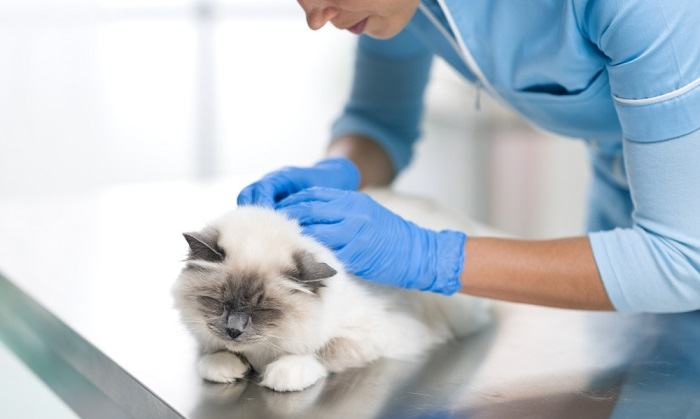
It is best to avoid contact with the solution during application and to wash your hands after. Stock-Asso / Shutterstock.com
While Advantage II for cats has been established as a safe product, the active ingredients may be found in other products in combination with other ingredients that are not safe for cats. This is especially the case with dog products like K9 Advtantix II, which has a similar name and similar-appearing packaging. K9 Advantix II contains permethrin, which is extremely toxic to cats.
Fortunately, these products are now required to include a warning against use in cats. But just to be safe, when selecting a flea/tick product for your kitty, always make sure the product includes a picture of a cat and indicates the product is specifically for cats.
It is also always advisable if you have a pup and kitty who like to hang out together or groom each other, to separate them for 24 hours after applying a topical product to your dog, especially if the product contains permethrin.
If you have any concerns for potential toxicity, even if you think your kitty might have just licked some Advantage II off her fur and is having a bitter taste reaction, it is always best to contact your veterinarian, or the ASPCA Animal Poison Control Center for further advice.
And lastly, topical products like Advantage II have been known to cause skin and eye irritation in people. It is best to avoid contact with the solution during application and to wash your hands after.
Advantage II for Cats Dosage
As with most topical flea treatments, Advantage II is typically applied every 30 days for the best protection.
Always follow all instructions on the packaging for any topical product you use for your kitty. Advantage II vials have a cap that needs to first be removed. The tip of the cap is then inserted onto the tip of the vial and twisted to break the seal. The contents of the vial can then be applied by parting the fur and applying to the skin along the back of the neck in front of the shoulders where a kitty cannot reach to lick it off of himself.
While Advantage II is considered to be waterproof, make sure not to bathe your kitty for at least 24 hours after an application. Bathing shortly before application may also reduce its effectiveness.
If for some reason you are unsure if the product was administered correctly or whether all of it was applied, it is usually safest to not apply an additional dose.
If you have any questions about application or safety for Advantage II or any topical product, make sure to get in touch with your veterinarian.
Conclusion
Advantage II for cats can be effective at treating and eliminating certain parasitic pests for your kitty. It is also relatively safe when used properly.
Topical products like Advantage II can all have different combinations of ingredients targeting different parasites, which can sometimes be confusing. Make sure to clarify any questions you have about the best product for your kitty by having a chat with your vet.
Drug Dosing Disclaimer: We are only able to provide doses for medications that are FDA approved for use in cats and only as the label guidelines dictate. For medications that are used off-label we can only provide guidelines and safety information for use. Safe and appropriate dosing for off-label medications can only be determined by a primary care veterinarian.
We encourage you to work with your veterinarian to determine if a particular medication is appropriate for your cat. Changing or adjusting a dose for your cat on your own without consulting with a veterinarian can carry risk. We do not encourage use of medications prescribed for human use in pets without first consulting with a primary care veterinarian.
Frequently Asked Questions
Is Advantage II for Cats Effective?
The ingredients in Advantage II for cats appear to be effective against fleas and assisting in clearing out flea infestations.
However, the question of flea resistance to products like Advantage II and the idea that they don’t work comes up often. The 2017 article “Perception vs. Reality: Insecticide Resistance in Fleas” from DVM360 that refers to an article published in American Veterinarian that same year addresses this topic.
An entomology (“bug science”) professor from the University of California heavily investigated this question and concluded that while resistance has been seen to some flea treatment or prevention products, true chemical resistance in fleas with fipronil, imidacloprid, and some other newer products on the market has not yet been demonstrated.
In many cases, when a pup or kitty parent is still seeing live fleas on their pet after a product has been applied, this issue can most often be traced back to incorrect use or application of the product, as well as poor expectations. Following are some common errors or misperceptions.
Incorrect application (i.e. applied to the fur not the skin, failing to apply the whole volume of product, failure to properly puncture or open a vial prior to application)
Failure to apply to all pets in the household. If one pet brings fleas indoors, they can jump onto all pets in the home. If all pets are not treated at the same time, flea infestations can persist.
Bathing. Baths are a common go-to, especially when live fleas are seen. However, while waterproof, Advantage II needs 24 hours to spread throughout the oils on the skin. Bathing shortly before or after application removes oils from the skin as well as possibly the product itself.
Not Treating Long-Enough. It can sometimes take as long as 3 months to clear out a flea infestation. So while most veterinarians advise year-round protection against fleas and ticks, a product like Advantage II should be used every month for at least 3 months during an active infestation. Flea eggs not cleared from the home environment are likely to continue hatching every couple of weeks, meaning a kitty that received only one monthly dose of Advantage II can get infested again a few weeks later if the dose is not repeated the next month.
Not Treating Year-Round. Fleas have been known to over-winter indoors. Treating pets for only certain months of the year can leave open gaps in prevention for infestations to occur.
Failing to Treat the Environment. Because one flea can lay up to 50 eggs in just one day, the amount of eggs in a home environment with fleas can be staggering. If the environment is not treated effectively, continually hatching fleas may continue to be found on a treated pet.
Perceiving Products as Repellents. Always remember that most topical products like Advantage II do not have repellency action, meaning that fleas and ticks must come in contact with the skin to be killed. Heavily-infested outdoor areas as well as poorly-treated indoor infestations can be sources for large numbers of adult fleas to “suddenly” appear on a treated pet.
If You Still Think There’s a True Product Issue
If you feel you have applied a product properly and are addressing a flea infestation according to your vet’s instructions and still feel that a product is not working well, make sure to bring those concerns to your vet or contact the manufacturer of the product.
Which is Better for Cats: Advantage or Frontline?
Both Advantage II and Frontline products have different combinations of ingredients, so they can have different applications. Instead of thinking about which product is “better”, consider which product is more appropriate to your kitty’s needs.
Advantage II kills adult fleas and also targets flea eggs and larvae.
The Frontline products Frontline Plus and Frontline GOLD contain fipronil, which kills fleas but also kills ticks, lice, chiggers, and even the sarcoptic mange mite. Both Frontline products also contain (S)-methoprene, which targets flea eggs and larvae. Like Advantage II, Frontline GOLD also contains pyriproxyfen, making its effect on killing fleas more efficient.
In terms of the time it takes to kill fleas, Frontline GOLD starts killing fleas within 30 minutes, Advantage II within 2 hours, and Frontline Plus within 4 hours. Frontline Plus kills all fleas within 12-18 hours. Advantage II can kill all fleas within 12 hours and Frontline GOLD is likely comparable.
So all the products do very similar things as far as addressing fleas.
So when choosing between the products, consider the other things they bring to the table. If you live in a heavily tick-infested region and especially if you have a kitty that goes outdoors, a product with tick prevention would be higher on the list.
There is no topical product as of yet for kitties that does everything, so always carefully consider the benefits and detractors of each. Because there are so many products out there and they all seem to be slightly different from each other, it can get confusing. Make sure to give your vet a call to ask about what product he or she would recommend for your kitty.
What is the difference between Advantage I and Advantage II?
The original Advantage product contained only imidacloprid, which can only kill adult fleas. In 2011, Advantage II was released containing the additional ingredient pyriproxyfen, which can also kill flea eggs and larvae. Because Advantage II is more effective at addressing the entire flea life cycle and ending infestations, Advantage II has largely replaced the original Advantage product.
What does Advantage II for cats kill?
Advantage II for cats kills adult fleas, flea eggs, and flea larvae. According to the product label, it can start killing adult fleas within 2 hours of application, and can kill all fleas on a pet within 12 hours.
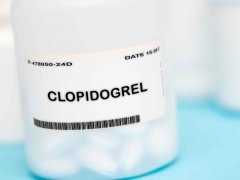

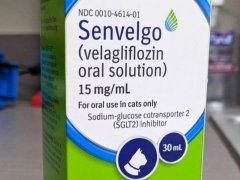
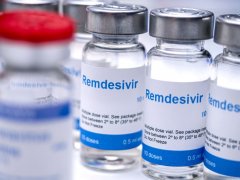

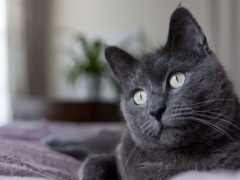
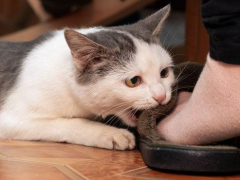

Is neurological damage possible from this product after long term use in a cat? around face/ neck/ jaw area? what are common long term side effects? i just stopped using Advantage ll after many years, due to so much bad info. Looking for natural alternative. year round flea issues in CA, even though indoor cat. ugh. would appreciate response from Dr. Vanderhoof. other comments welcomed as well.
Can Advantage 2 cuase neurological damga in cats? Especially neck/ jaw area. If yes.. what are Symptoms? Please clarify that Advantahe 2 is NOT a systemic drug. xo
Hi Mindia,
Neurologic side effects are not known side effects of the ingredients in Advantage II, pyriproxifen and imidacloprid. The side effects listed in the article are the only ones anticipated to occur in a smaller number of cats.
Now, it is possible for a cat to have an acute allergic reaction to any medication and Advantage II is no exception. It might be possible for this to have the appearance of a neurologic episode.
Advantage II is only a topical medication and is not absorbed systemically in the sense that it has any levels in the bloodstream or is metabolized/excreted by liver, kidneys, etc.
It’s always important to mention that there are similar products, which are only labeled for dogs, but may get confused and used on cats, that contain permethrin as well as imidacloprid and pyriproxyfen (Advantix II). Any cats exposed to permethrin can develop severe toxicity that includes neurologic signs like muscle tremors, twitching, and seizures.
Thank u for reponding. I meant morefor long term use side effects; not acute reaction. I have never mixed up the product. So how does this product get processed & cleared from the cat? After years of use, I would think even topical, non sytstemic drug can effect the liver etc. over time. It is aneurotoxic pesticide. Thoughts?
Hi Mindia
The skin is a complex organ that consists of multiple layers. The outer layer is composed of lipid and essentially acts as a barrier against the absorption of water, electrolytes, and other things on the surface like bacteria. It’s the reason we simply don’t absorb water when we come in contact with it. When you have a topical product that is chemically only lipid soluble, it can spread throughout this layer on the skin surface, but cannot absorb further.
This is what happens with topical flea/tick products. When applied topically, they spread throughout the lipid layer. The reason they wear off after a month or so is not related to the body clearing them systemically in some way. The skin constantly sheds its outer layer and as this occurs, the topical product simply dissipates over time.
Using the products for years isn’t going to change lipid solubility principles of the skin. When applied topically, imidacloprid and pyriproxyfen don’t get absorbed in the bloodstream or by internal organs. Now, there are products that can get absorbed systemically when applied to the skin, because they are designed chemically to penetrate both the outer lipid layer and the water soluble layers beneath. Revolution is one example. Such products however are regulated by the FDA and not the EPA, since they are internally metabolized and excreted drugs, not topical pesticides.
As far as neurotoxicity, these also are not created equal. Neonicotinoids, of which imidacloprid is one, are highly selective for subtypes of receptors found only in insects and don’t readily cross the blood-brain barrier. This doesn’t make toxicity in mammals impossible, but highly unlikely. Pyriproxifen is not a neurotoxic agent but mimics insect juvenile growth hormone, halting insect development, making it also highly specific against insects.
It does sound like you are trying to negate what is clearly a problem for many cats who used Advantage 11. Perhaps, one in hundred applied it incorrectly(its not rocket science).
There must be natural ways to help them.
We have to eat food with pesticides , too , while the wealthy eat organic.
It’s a toxic society- don’t pretend otherwise. It’s better to say that there are serious risks fir some cats instead of lying or minimizing. Do you think people are stupid?
Hi Senada,
Thanks for your comment.
I have said as part of response to comments on many medications and products that risk always exists when pretty much using anything. Any medication, drug, or any product we use for pets or for ourselves carries risk, including the potential for very serious risk. Any topical product applied to the skin of a cat can carry a risk for skin irritation or a hypersensitivity reaction. You can’t predict this response and it depends on the individual cat. The Advantage II product carries a warning of this nature stated on the back of the box.
When choosing to use a product, we make an assessment of the risk posed by the product we’re using compared to the risk posed by what we’re trying to treat or prevent.
The likelihood of very serious risk is very low when considering how many millions of cats get these products. Reading the comments for this article you’re unlikely to get that impression because when serious side effects do occur, this is a place people come to be heard and ask questions. So many comments here are related to adverse effects.
And no, I do not believe that people are stupid. But I do believe that there are a lot of things constantly vying for our attention more than ever and people may not take the needed time to check products carefully or read instructions thoroughly before using something.
Historically, according to research and surveys going back a couple decades, incorrect product use or incorrect use of a product have been leading reasons for more serious adverse events to occur in cats with topical products. That’s why we always ask these questions first.
I always encourage anyone who feels they have used a product correctly and sees side effects in their cat, especially serious ones, to report this to the company (in this case Elanco) or the appropriate regulatory agency (in this case the EPA).
And people do try natural, non-commercial products. But there is no amazing universal solution there either. Many natural products have no regulation or oversight with varying ingredients and some included ingredients like essential oils, carry toxicity concerns for pets. And remembering that pyrethrins, derived naturally from chrysanthemum flowers and used in pesticides, are highly toxic to cats is a reminder that being natural doesn’t always mean safe or effective. Incorrect use of a pyrethrin/pyrethroid product in a cat has always been a top concern. Some folks are advocates of diatomaceous earth for parasite control. It has some plusses and minuses, but here is a link to our article on it for more info as an alternative.
Some may elect not to use a parasite prevention product at all. Veterinarians don’t recommend this because of the health risks posed by fleas and ticks. Not using a product at all means accepting those health risks.
Why did you not post all of my review? I took her to the vet and they did blood work, only to find out that she is in kidney failure! You only posted what you wanted to! Post all of the comment where I wrote that she started running around biting and scratching and biting herself immediately after I had applied the product. This went on for days. Then she started throwing up violently. . I am definitely sure I applied it correctly. I am very angry that you are turning around my review by not posting all of it!
I’m sorry Kathryn, but there is no earlier post that I’ve been able to find. No one intentionally omitted or edited any posts of yours. What is posted there is all that came through. This is understandably a very difficult time for you. Thank you for providing the additional information and a more complete picture of what was experienced.
Serious side effects in my dear 5 year old cat. She was constantly throwing up almost every 3 days. Now she won’t eat. She acts like she had been poisoned. She just started drinking, but not much.
I’m sorry to hear this, Kathryn. Digestive upset can occur with Advantage II for Cats. But it’s important to review if the medication was applied in an area where a kitty cannot lick or ingest it and I have unfortunately still heard occasional reports of pet owners applying the dog product K9 Advantix II which is toxic to cats. If your kitty is not eating anything for 24 hours, serious complications can occur, so it’s really important to have her seen by a veterinarian as there are treatments to help with nausea and stimulate appetite.
Is one dose of Advantage ll enough to get rid of all the fleas if the cat is an indoor cat and then has no contact with other cats? I’m told the flea medicine will kill fleas at all stages of life and that other fleas will just die on their own if they don’t go on the cat to feed.
Hi Elizabeth,
You are correct that Advantage II for cats kills fleas at all life stages.
However, the time it takes to get rid of all the fleas in your home depends on how bad the infestation is. Any fleas on your cat will die and any adults in the home environment will seek your cat out and die as well if they come in contact with the product.
The point is to kill adult fleas before they can lay any new eggs on your cat or in the home.
But any unhatched flea eggs, pupae, or larvae in your home environment can take time to hatch/develop into new adult fleas.
This is why it can appear that an infestation is gone but fleas “come back” a couple weeks later. Also why extensive cleaning of your home and potentially having it professionally treated can be important.
This is also why I usually advise, at a minimum treating with an approved product for at least 3 months straight. This is usually long enough to outlast any fleas remaining in the home.
THE STUFF BURNED A HOLE IN ALL THREE OF MY CATS, AND THEY ARE SICK AND SUFFERING. DONOT USE ADVANTAGE 11 FOR CATS
Yikes, thank you for sharing, Deborah. Did you use the product as instructed?
This product caused side effects with all 3 of my cats…..so sad but one of my cats it effected more till she was too far gone to turn around!!!!!….from adverse side effects!! CLEO is at the Rainbow Bridge….🥲🥲🥲🥲🥲🥲🥲
so very sad to hear about your kitties. i just stopped giving my cat Advantage 2 (after many years) since i learned of issues. do u mind sharing what stmptoms your cats had? i am concerned my kitty may have neurological damge.
Bad adverse side effects with my 3 cats…..1 could not turn around or get better …..she suffered & therfore had to be put to sleep!!!!!!
Never
Serious side effects could occur in particular animals. But seeing adverse reactions in more than one cat in the same home would be unusual. Is there a chance that your cats may have licked the product off of each other after application or ingested the product? The other concern, which can be a very serious concern is getting the Advantage II product confused with the Advantix II product intended for dogs. The Advantix II product contains permethrin which is highly toxic to cats, even when just applied topically. If we’re certain the product was not licked off/ingested and that Advantage II was actually the product used (and not a generic product or Advantix II), then I would contact the manufacturer (Elanco Animal Health) to report any such severe side effects.
So very sad to hear. XO
I am having problems controling fleas on my 22# cat. Ia one large cat applicaator for cats over 9 pounds enough? A twen ty two pound cat is well above a 9 pound cat.
Hi John,
Thanks for the question. To my knowledge, there is no upper weight limit for the product. However, it may be worth calling the customer assistance number, which is listed on the back of the box to check with a rep and see if this can be verified.
If you are having trouble with fleas, this can mean many different things to me. If you haven’t, I would first refer you to the FAQ section of the article on Advantage II. In the answer to the first FAQ question, there are a number of reasons for product “failure” which are instead common misinterpretations or misunderstandings of how these products work and what they can do.
If you feel that you can genuinely say that none of those conditions applies, and you do feel that a product failure is truly possible, I also suggest contacting the customer service number to report your concerns.
Can anyone tell me what happens if your cat has got to much? What are the signs of overdose?
Hi Misery,
Thanks for your question and hopefully your question is only as a “just in case” concern and your cat is not currently showing signs of illness. If so, make sure to touch base with your vet and/or the Pet Poison Helpline or ASPCA Poison Control.
This is a topical product that is not absorbed systemically, so if a kitty has no topical sensitivities generally to Advantage II, then receiving an extra topical dose by mistake is unlikely to have an adverse effect. Signs of irritation, redness, itching at the application site, etc. could be seen as topical reactions/sensitivities. Most toxicities that occur happen when these topical products are incorrectly administered orally, or if the product is applied in the wrong location and a cat is able to lick it off shortly after it’s applied. These signs of toxicity may include excessive drooling, oral irritation, vomiting, lethargy, and hiding. Essentially, the same types of signs mentioned in the side effects section of the article.
We alternate every month between Cherestin and Frontline (for the ticks). We were using Advantage II and found it wasn’t as effective over the years (our cats are older). A vet suggested we might try alternating between two or more products and that has worked well. What do you think of Cherestin?
Hi Paula, thanks for commenting! You can learn more about Cheristin in this article by Dr. Chris Vanderhoof. Hope this helps!